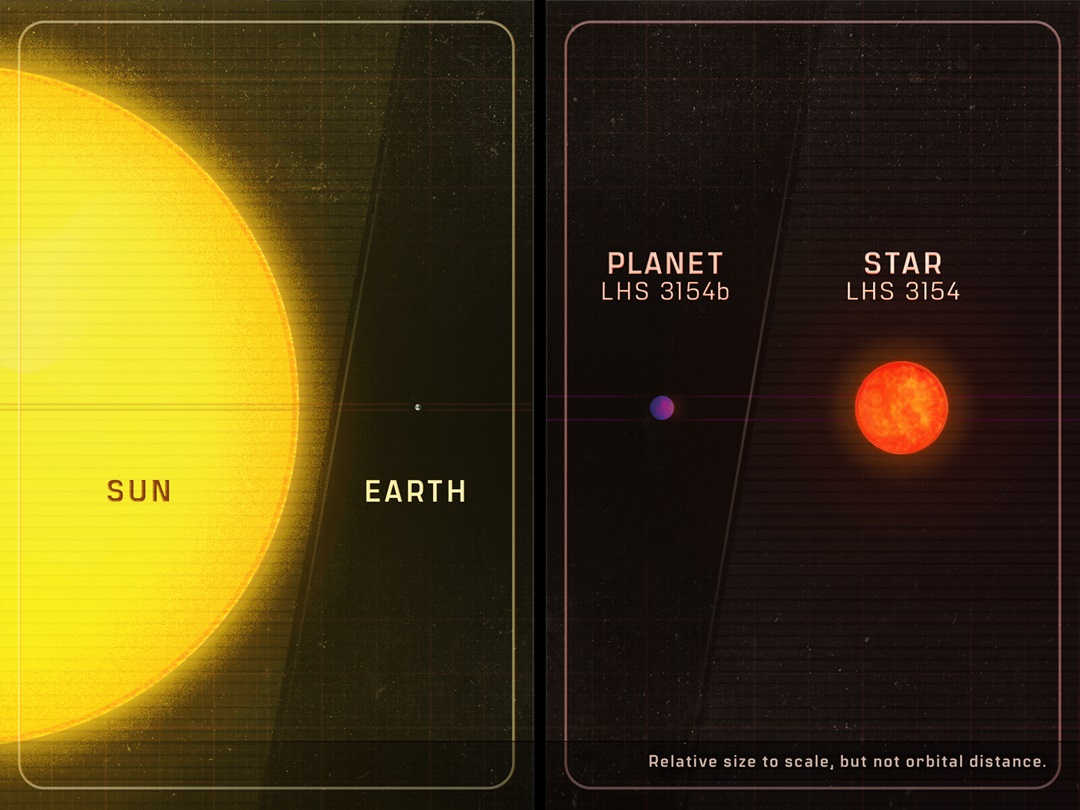The observation of an exoplanet has shaken up previous wisdom on planet formation because it is far too big for its host star.
A Neptune-sized planet has been found orbiting the “ultracool” dwarf star LHS 3154. The exoplanet is at least 13.2 times more massive than Earth, while its host star is 9 times smaller than our Sun.

The planet’s discovery is announced in a paper published in the journal Science. Named LHS 3154b, it was found using an astronomical spectrograph built at Penn State, called the Habitable Zone Planet Finder (HPF).
It is the first time such a massive planet has been found orbiting such a low-mass star. The discovery goes against current theories about planet formation around small stars.
“This discovery really drives home the point of just how little we know about the universe,” says co-author Professor Suvrath Mahadevan from Pennsylvania State University in the US.
Astrophysicists believe when stars form from clouds of gas and dust, the remaining matter forms a disc around the newborn star. Within the disc, clumps of matter accumulate through gravity to form planets.
“The planet-forming disk around the low-mass star LHS 3154 is not expected to have enough solid mass to make this planet,” Mahadevan explains. “But it’s out there, so now we need to reexamine our understanding of how planets and stars form.”
“Based on current survey work with the HPF and other instruments, an object like the one we discovered is likely extremely rare, so detecting it has been really exciting,” adds co-author Megan Delamer, astronomy graduate student at Penn State.

HPF is located at the Hobby-Eberly Telescope at the McDonald Observatory in Texas and is one of the highest precision instruments of infrared signals from nearby stars.
It also calls into question the formation of stars themselves. The dust-mass and dust-to-gas ratio of the disk surrounding stars like LHS 3154 would need to be 10 times higher than what was observed to form a planet as massive as the one the team discovered.
The Habitable Zone Planet Finder (HPF), it was designed to detect planets orbiting the coolest stars with the potential for having liquid water on their surfaces.
HPF is located at the Hobby-Eberly Telescope at the McDonald Observatory in Texas and is one of the highest precision instruments of infrared signals from nearby stars.
“Making the discovery with HPF was extra special, as it is a new instrument that we designed, developed and built from the ground-up for the purpose of looking at the uncharted planet population around the lowest mass stars,” says lead author Guðmundur Stefánsson, NASA Sagan Fellow in Astrophysics at Princeton University.
“What we have discovered provides an extreme test case for all existing planet formation theories,” Mahadevan says. “This is exactly what we built HPF to do, to discover how the most common stars in our galaxy form planets – and to find those planets.”

Cosmos is a not-for-profit science newsroom that provides free access to thousands of stories, podcasts and videos every year. Help us keep it that way. Support our work today.
